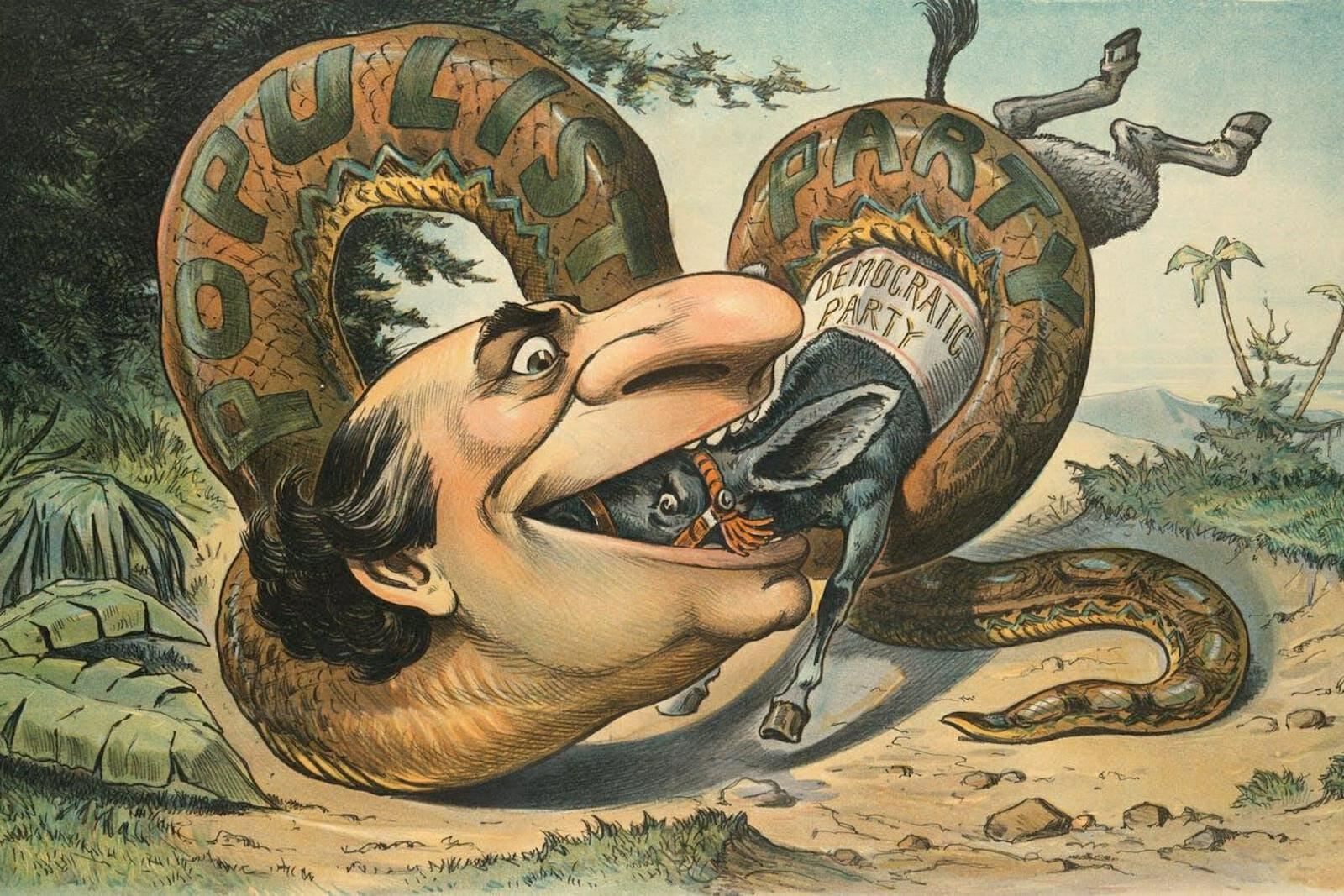
Politics
A Third Party can Rein in Extremists in Both Parties
When the Republican Party ousted Liz Cheney from a leadership position, it exposed a major ideological divide within the current GOP. That caused some people, including prominent Republicans, to suggest there might be a third party in the making.
Most commentators and political scientists have dismissed that idea, observing the inevitability of U.S. politics remaining a two-party system.
But my research finds circumstances are better now for a third-party insurgency than at any time over the past century. Though there is no way to predict precisely when a third party will emerge, the situation is in fact ripe for a third party to challenge what has become a Donald Trump-controlled Republican Party.
My research also finds that the most successful third parties in U.S. politics don’t typically rise to dominance but instead challenge the major parties enough to force them to change course.
A brief history of U.S. third parties
In my 2018 book, The Demise and Rebirth of American Third Parties, I explain that the strength of third parties since the American Civil War has been closely related to how polarized the two major parties have been. When the major parties are highly polarized, larger groups of voters end up being not represented by either one, and the intense contention between them also increases political dissatisfaction.
The Democratic and Republican parties were extremely polarized for a half-century after the Civil War. During this period, third parties were aggressive and strong.
Their goal, however, was not to attempt multiparty democracy, as some hope for today.
Supporting poor farmers and opposing business monopolies, the Greenback Party shook up electoral politics in the 1870s and 1880s, winning widespread support, especially across the Midwest. The Populist Party, which was also a party supporting poor farmers, was even more successful in the 1890s. It collapsed by 1900, but during its brief existence, it threatened the Democratic Party to the degree that the Democrats eventually adopted many Populist stands and made leading Populist William Jennings Bryan their presidential candidate.
The current divisions within the Republican Party most closely mirror those found within the GOP in the early 1900s. The party was then divided between a reactionary wing, headed by House Speaker Joseph Cannon, which was pro-business and conservative; and a more progressive wing led by Teddy Roosevelt, which was being largely marginalized. The progressive wing supported political reforms, including requiring the major parties to nominate their candidates through primary elections instead of having party bosses choose them, and promoted economic reforms such as having child labor laws and business regulations.

In 1912, the progressive wing split from the Republican Party and formed the Progressive Party, which became one of the most successful third parties in American history, inventing modern election campaigning through the use of mass media and pushing both major parties to support progressive reforms.
While this move undermined the Republicans’ electoral prospects in the short term – even Cannon lost his House seat – it nevertheless also helped usher in progressive reforms that pushed the Republican Party toward becoming more moderate, including nominating moderate Charles Evans Hughes for president in 1916 in hopes of reuniting the warring factions in the party.
Then, starting in the 1920s, when the Democratic and Republican parties became less polarized and began compromising more with each other, third parties, including the Progressives, all but disappeared from American politics. The only strong third parties that remained were in a few states, like the Farmer-Labor Party in Minnesota and Wisconsin Progressives. By the mid-1940s, Farmer-Labor joined the Democratic Party, and the Wisconsin Progressives returned into the fold of the Republican Party. In Minnesota, the Democratic Party is still called the Democratic-Farmer-Labor Party.
Once polarization reemerged, however, starting around 1968, third parties began slowly rising again and gaining greater public support.
Will history repeat itself?
Today, both major parties have become highly polarized, though the Republican Party has moved much farther to the right than the Democrats have shifted to the left. Anti-Trump Republican politicians likely have no future in their party today.
Because of their fervent opposition to the Democratic Party, moderate Republican voters effectively lack any major party to vote for.
With the Libertarian Party remaining focused more on ideological purity than capitalizing on changing political opportunities, circumstances are ripe for a moderate conservative party to emerge.
The Republican Party has left few options for the center-right. Even mildly critical voices within the GOP, such as Cheney’s and others, have been marginalized, especially at the state level. Moderate conservative voters are dissatisfied with their party’s capitulation to Trump and his allies – a capitulation made despite Trump’s declining favorability numbers among Republican voters.
All this adds to the likelihood of a moderate conservative party emerging. If it does, and if it follows historical patterns, this new party will likely not seek a mass appeal. Rather, it will target voters who are moderate conservatives, independents, and anti-Trumpers.
The new party could gain strategic advantages by fielding candidates in local and state elections in more moderate places where some Republican candidates have nevertheless chosen to follow their party to the extreme. Like-minded anti-Trump donors may see the possibility of success and fund their efforts.
Any third party that forms might not last long. The Progressive Party existed for less than a decade, for example. But by strategically winning the votes of moderate conservatives and thereby undermining Republicans’ electoral goals, even if briefly, a new third party could stop the GOP from hurtling farther down an extreme and undemocratic path.
This article was originally published on The Conversation. Read the original article.

